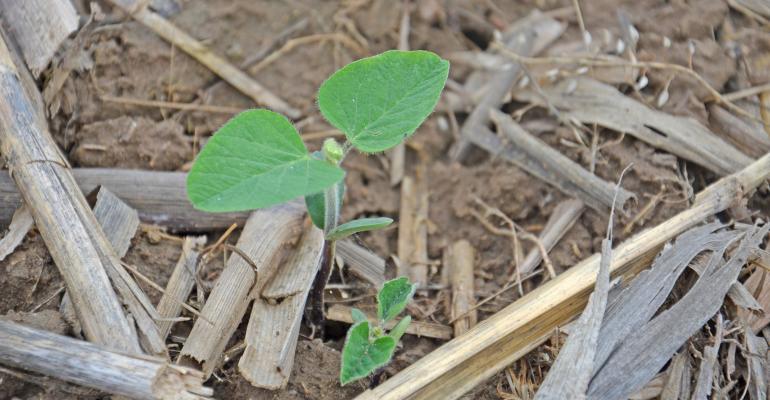When seed treatment decision boils down to dollars and cents

Soybean Pest Beat: Are you considering planting some soybeans without seed treatment to save money?
Tom J Bechman | Feb 03, 2018
I am going with untreated soybean seed on half my seed to save money. What precautions should I take, and where should I position the untreated seed to avoid issues?
The Indiana certified crop advisers panel this month includes: Gene Flaningam, Flaningam Ag Consulting LLC, Vincennes; Greg Kneubuhler, G&K Concepts, Harlan; and Tom Stein, manager of the Templeton and Boswell branches for Ceres Solutions Cooperative.
Flaningam: Your untreated soybeans should be planted later in the season to avoid environmental stress. The warmer soils should decrease the time it takes for your soybeans to emerge.
Obtaining improved stands and experiencing less potential for sudden death syndrome and other seedling blights are all reasons for considering and using soybean seed treatments.
Kneubuhler: We don’t recommend planting untreated soybean seed. We’ve seen too much positive response to seed treatments, especially to fungicides such as metalaxyl or mefenoxam treatments, to leave soybeans untreated. In this economic environment, we understand that all expenses need to be scrutinized. In this case, however, this is not an area where I would trim expense.
If you feel you need to leave half your soybeans untreated to save money, then my target for them would be my last-planted soybeans. Treatments generally help with soilborne diseases such as phytophthora and various stem rots. When soils experience periods of prolonged wetness and are compacted, fields can carry a higher risk of these diseases. Planting early obviously opens the door for soils to be wet and cold longer. Working wetter soils to plant soybeans also increases the odds of creating soil compaction. Thus, these are the reasons I would plant my treated seed first, if that’s how I was set up, and I couldn’t treat all my soybean seed.
Stein: You should position the untreated seed to be planted after you plant your treated seed. That should preclude some of the challenges and exposure to risks that early-season planting has associated with it. Target planting into warm, well-drained fields that are moist enough for germination and when heavy rains aren’t forecast for the next two weeks. Avoid planting untreated seed into fields that are cold, wet, poorly drained, have a history of nematodes or fungal diseases such as phytophthora, or have a history of being replanted often.
Summing up: If you can’t afford seed treatment on all your soybean fields, plant treated seed that you believe you can afford on the most vulnerable fields. These may include where you’re planting early, in naturally wet soils without pattern tiling and in fields where you know you have experienced issues with fungal diseases in the past. At least one CCA, Greg Kneubuhler, feels strongly that you should plant only treated seed, if possible. He advises clients primarily in northeast Indiana and northwest Ohio where soils tend to be heavier, wetter and cooler in the spring than in some other areas of the Midwest.

